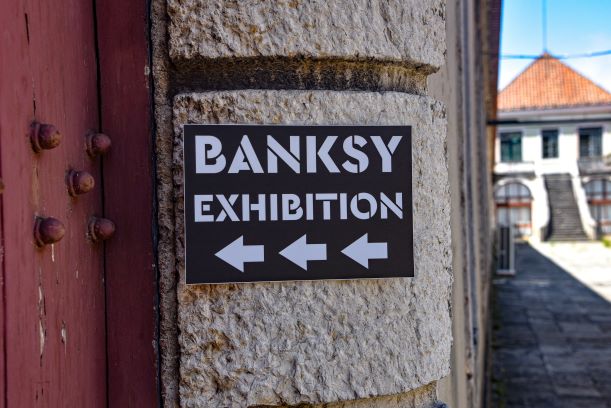In the midst of all the unsettling news brought about by the coronavirus pandemic, the UK’s traditional summer “silly season” of news was somewhat los
In the midst of all the unsettling news brought about by the coronavirus pandemic, the UK’s traditional summer “silly season” of news was somewhat lost in the endless shuffle of 2020’s events. However, one of the few moments of levity to emerge in early September 2020 was the return of an old favourite — attempting to uncover the secret identity of legendarily anonymous street artist Banksy.
The air of mystery around the allegedly-Bristolian artist may be to do with his roots in creating illegal street art, but his insistence on staying incognito has had a self-serving edge to it as well. As American gallery ArtLife points out, “there’s no denying that this mystery is largely responsible for the buzz around his brand, with the intrigue around his identity serving to continually boost his profile.”
Here, we’ll go through a few of the most widely-speculated contenders for who the “real” Banksy is, starting with the most recent, and arguably one of the most unlikely, candidates.
Neil Buchanan
Best known as the chirpy host of children’s TV show Art Attack for seventeen years from 1990, Neil Buchanan has spent the ensuing years playing in his metal band Marseille and fending off constant rumours of his own demise. However, once the latter had been thoroughly debunked, a new theory started springing up: that he was in fact Banksy.
This conjecture had its origins in a single tweet, linking parts of the UK where Marseille were touring with the sudden presence of new Banksy works shortly after the band skipped town, as well as the similarly grand-scale works both artists are prone to making. The connection immediately sent people hopefully searching for evidence that the TV presenter was indeed the firebrand street artist. Via his own website, Buchanan strenuously denied the rumours, stating “I am honestly, hand on heart, NOT Banksy!! Trust me, if I had created some of those amazing images he has made, I would be the first to stand up and take a bow.”
But then again, that’s exactly what the real Banksy would say.
Robert “3D” Del Naja
A founding member of the influential Bristolian trip-hop group Massive Attack, Del Naja has been one of the longest-standing suspects, and much of the speculation around his being Banksy comes from similar roots to Neil Buchanan. New Banksy pieces would appear in cities where Massive Attack had recently played, while both artist and musician have spoken highly of each other’s work over the years.
Meanwhile, a perceived slip-up by drum and bass DJ Goldie has given further credence to the idea. While discussing Banksy in an interview on Scroobius Pip’s Distraction Pieces podcast, Goldie appears to say “No disrespect to Rob, I think he is a brilliant artist. I think he has flipped the world of art over.” Many leapt on this, immediately convinced that this was all the proof necessary to pin Del Naja down as the controversial artist. And with no shortage of political statements in his own history, he may be the most likely candidate if Banksy is indeed a known figure.
Robin Gunningham
However, if Banksy isn’t the alter ego of a high-profile figure, there’s still potential for Goldie’s faux pas to have some level of credibility if Rob(in) Gunningham is behind the artist’s work. Another Bristol native, Gunningham has had a storied history within the city’s art scene, and many of his early works share themes and visual signifiers with the more notorious artist, though again, Banksy’s camp have denied all links.
More intriguingly, Artnet spoke to art critic Carlo McCormick, who told the website that there was a 75% chance that Gunningham could indeed be Banksy’s true identity. This came in part from a study by Queen Mary University in London, who used an advanced criminological technique called geographic profiling which matched the locations of various Banksy works with Gunningham’s own whereabouts. However, despite the potential for this being Banksy’s true identity, McCormick opines that “it is scary to think that something as creepy as geographic profiling” being used for something as relatively trivial as unmasking an incognito artist.



















































































































COMMENTS